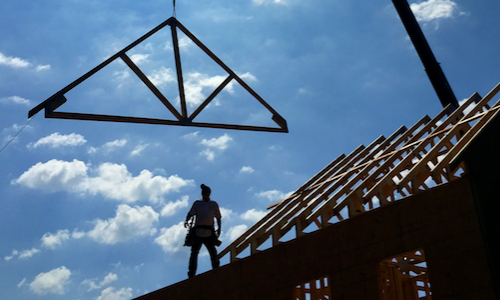
The historic, nationwide housing inventory shortage could be cured by more new-home construction, real estate economist Lawrence Yun said, but barriers exist before construction can ramp up.
Raising interest rates could dampen homebuying activity, with 53 percent of prospective home buyers telling Zillow that the new rates would negatively effect their purchase efforts. After the Federal Reserve raised interest rates in March – the second time in three months – federal officials have indicated that two more increases this year and three in 2018 are in the works.
Meanwhile, a shortage of listed homes and a glut of buyers has led to increasing home prices in many markets, including Miami and Chicago. Rising interest rates will only make buying a home more expensive. So, how to fix the problem?
One idea is to build a significant number of homes, according to Lawrence Yun, chief economist of the National Association of Realtors.
Not enough homes
The long-term average for homes built per year is 1.5 million, Yun said in an op-ed published on CNBC.com. Those homes were routinely filled, with about 1.2 million new households formed per year and about 350,000 demolished or uninhabitable homes each year, Yun said.
After too many homes were built during the bubble years of 2003-2006 (an average of 1.9 million homes), new-home construction has not been kept pace with its historic average, Yun said. From 2007-2016, average housing starts were 900,000 per year, a number he called “grossly inadequate.”
“That is why there is a housing shortage across the country,” Yun wrote. “The faster the homebuilding recovery, the slower the housing inflation. Consequently, the broader consumer price index will also slow and thereby allow more breathing room for the Fed to temper the pace of rate hikes.”
Home builders might be on board with this assessment. Builder confidence has reached a 12-year high as the market buoyed up after President Donald Trump’s calls for deregulation, according to CNBC. But there are hurdles before home construction can ramp up.
Barriers to homebuilding
Homebuilders across the nation faced crippling labor shortages in 2016, but there may be some good news on that front in 2017.
In a December 2016 study, 82 percent of builders said the number one problem they expect to face this year is the cost and availability of labor, according to the NAHB/Wells Fargo Housing Market index. That is a slight increase of 78 percent in 2016. In 2011, only 13 percent of builders reported problems finding workers.
A Bureau of Labor Statistics report shows there were 147,000 open construction jobs in January, a number that has been steadily rising since 2010. There have been short-term increases in hiring, however. The industry added 18,900 home builder and remodeler jobs in February, according to the BLS. December and January marked the two strongest months for construction hiring since late 2014.
If Trump’s pledges to tear down regulations and improve the economy come true, a reversal in the hiring trend could continue.